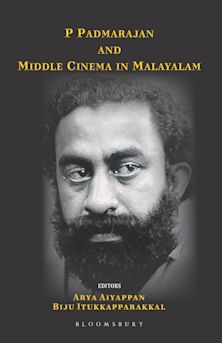Environmental Communication and the Wild
Image, Industry, and Technology
Environmental Communication and the Wild
Image, Industry, and Technology
Description
This edited volume brings together scholars, teachers, journalists, activists, and filmmakers engaged in environmental communication and media studies to explore the constructions of primitive and wild spaces in our cultural creations of film, television, advertising, social media, infrastructure, and new technologies, among other media. Contributors present close analyses of a number of examples - including Indigenous social media activism, National Geographic, #VanLife content, Japanese haikyo, and more - to examine the representation, commodification, exploitation, and politicization of primitive and wild natural areas in contemporary media and technology. Ultimately, this collection demonstrates that, while the media of wild representations have significantly changed since the days of our ancestors, the same themes of reverence, fear, beauty, power, and awe are still reflected and coopted. Scholars of environmental studies, communication, popular culture, technology studies, and media studies will find this book of particular interest.
Table of Contents
Introduction
Part I: Techno Wilds
Chapter 1: On Conserving Cyberspace: The Metaphorical Wild and Digital Networks
Christopher Lee Adamczyk
Chapter 2: Visualizing the Future of AR Environmental Communication
Kailan Sindelar
Chapter 3: Nature as Vanishing Wilderness: Mobile Communication Technologies and Colonial Epistemologies
Stephen B. Crofts Wiley
Part II: Performative Wilds
Chapter 4: Environment as its Own Movie Director: Anti-Representationalism as More-Than-Human Cinema
Hugo Picado de Almeida and Adalberto Fernandes
Chapter 5: "We Shall Remain Men": Masculinity, Nature, and Environmentalism in YETI Presents Films
Brandon Robert Green
Chapter 6: Born in China and the International Political Economy of Disneynature
Phillip D. Duncan, Janet Wasko, and Zak Roman
Part III: Mediated Wilds
Chapter 7: Wilderness, Constructed: The Dystopian Imaginaries of Lori Nix and Kathleen Gerber
Kathleen M. Ryan and David Staton
Chapter 8: From Sacred Lands to Social Media: Indigenous Sovereignty Digitized
Nii Mahliaire
Chapter 9: Transition in Translation: Haikyo, The Wild, and the Mediation of Material Decay on Instagram
Evan R. Jones
Chapter 10: Framing Wildlife through National Geographic: Animal Logic in the Anthropocene
Minos-Athanasios Karyotakis
Part IV: Experiential Wilds
Chapter 11: Driving Discourses of Ecotopia: The Wild and the Winding Road of #VanLife
Derek Moscato
Chapter 12: The Pennsylvania Wilds and the Rhetorical Construction of Wilderness
Casey R. Schmitt
Chapter 13: Traces of Extraction: Finding and Forgetting Environmental Destruction in "Wild and Wonderful" West Virginia
Ryan McCullough
Chapter 14: Losing Raymond: Digital Rescue Technologies, Social Media, and The Wild
JV Fuqua
About the Contributors
Product details

| Published | 10 Jul 2025 |
|---|---|
| Format | Ebook (PDF) |
| Edition | 1st |
| Extent | 366 |
| ISBN | 9798765154427 |
| Imprint | Bloomsbury Academic |
| Illustrations | 15 bw illus and 1 table |
| Publisher | Bloomsbury Publishing |
Reviews

ONLINE RESOURCES
Bloomsbury Collections
This book is available on Bloomsbury Collections where your library has access.

































